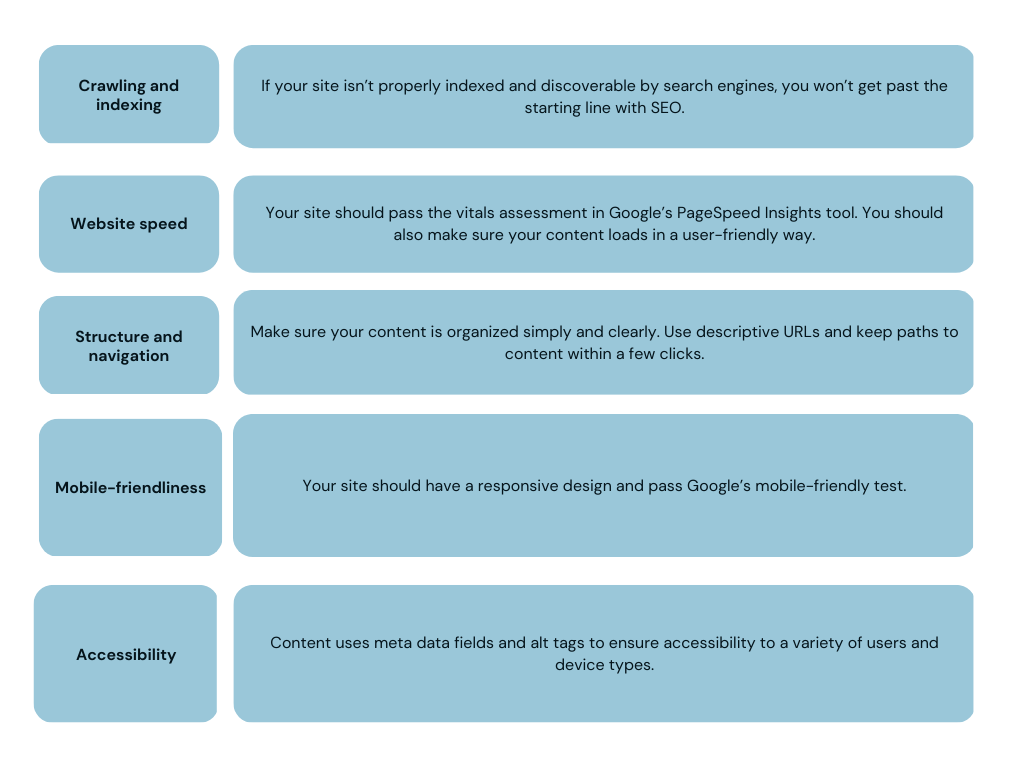An SEO strategy is a plan to improve the ranking and appearance of your digital content on the search engine results page. The role of SEO strategy in digital marketing is to generate more organic traffic to your website over time.
There are three primary SEO marketing strategies: technical optimizations, keyword-driven content, and backlink building. Let’s dig into all three.
It’s critical to build a solid technical SEO foundation before you start creating and promoting content on your website. If you’re new to SEO or developing a strategy for a new organization, a technical audit should be the first step in your plan.
What does a technical audit include? You don’t need to reinvent the wheel on this one. Look for resources from the big names in SEO. We like this technical SEO checklist from Moz because it prioritizes each element and suggests tools to help.
Here are some technical details to evaluate in your audit.

High-quality content is the backbone of SEO. By itself, however, it’s not enough to get the best results from your hard work. Your content must be rooted in thoughtful keyword research to ensure you’re reaching the right audience and meeting their expectations with your content.
There are many keyword research tools to get the ball rolling. Google’s free keyword planner is a great place to start, and for deeper insights, try Ahref’s keyword generator.
From your research, choose focus keywords that match your audience’s intent. One of the most common SEO mistakes we see is a mismatch between content and search intent.
For example, a user who searches for “best running shoes for long distance” probably intends to make a purchase with the information they find. If your content lacks key info like reviews and ratings of specific shoes, it won’t meet the searcher’s expectations. Google will notice this based on user behavior and demote your content.
Once you’ve targeted a keyword and identified the intent behind it, it’s time for content creation (finally). Today, search engine algorithms are better than ever at identifying helpful content. Here are some traits they look for:
Search engines look at the backlinks your content has earned to help determine whether others have found it helpful. For this reason, your SEO strategy should include a proactive plan to get backlinks from trustworthy sources.
How do you get backlinks? Keeping up with owned web properties outside of your website is one way. Share your content on your own social pages with engaging posts that foster sharing and discussion. If your product or service appears on directory websites, claim those profiles.
The primary way to get backlinks, though, is to strategically ask for them. Follow these steps:
You can also ask these publishers about opportunities to guest blog on their site. These might be paid or free opportunities - or the pub might not accept guest content at all. But you won’t know until you ask.
A simple plan would incorporate the SEO tools and techniques described above. Here’s an example:
Overall, an effective SEO strategy can increase your website traffic, build brand trust, and increase conversion rates. By following the steps and strategies we’ve discussed, you can create an actionable plan using SEO techniques in digital marketing.